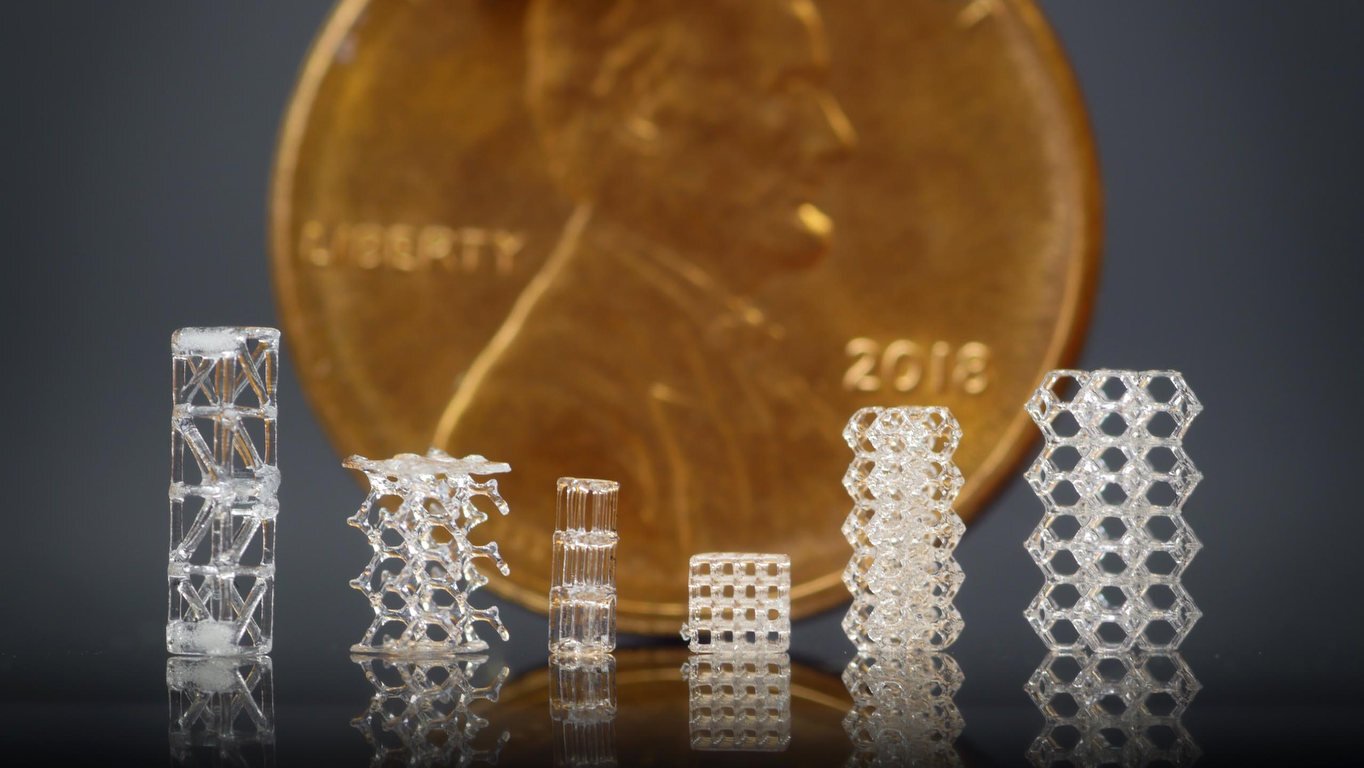- 15 Posts
- 420 Comments

 22·19 days ago
22·19 days agoOh, fuck off.

 22·19 days ago
22·19 days agoNo, that is not what he said at all.
Second this.
Resins have a typical use-time for within a year. Some may last longer, some may not. Some may start to show exposure issues. Some just start to separate or solidify partially. Some resins don’t care at all. (It should be written somewhere on the bottle when the resin was made and when it should be used by.)
This is a helluva “unknown variable” you are working with, is my point. Resin is the absolute core of any printing functionality (obviously) and print settings are highly dependant on the resins qualities.
Just because I am so damn picky during my testing and learning process, I would abandon testing with that resin completely and be thankful it even printed a calibration test at all. (I would get a fresh bottle, is what I am saying.)
However, in the interest of using the resin, I would YOLO the exposure time (increase it) and start printing prototypes or other strange experiments. There is a bunch of things I could test even if using a sub-optimal resin.
You could spend time with the rest of that bottle and tweak the settings into partial-perfection. How reusable are those settings for future bottles though?

 10·25 days ago
10·25 days agoI see a lot of inconsistent exposure, which is super weird.
How old is the resin? New? Was it purchased at the time you got the printer? Was it well shaken? One particular resin I have will separate hard and basically needs a blender to get broken up again to be capable of printing.
The biggest issue I see is the gap in the outline at the very top of the print. That shouldn’t happen that late in the print at all. It’s iffy resin or there are small solid chunks floating around in your tank.
My first week with my resin printer was spent testing exposure and probably did about a hundred or so “cones of calibration” ( https://www.tableflipfoundry.com/3d-printing/the-cones-of-calibration-v3/ ) with a few different resins.
While a person generally needs to be a little on the crazy side to do that much testing, it was effective. After all of the that testing, what I found out is that comparing two prints with different settings is more valuable than just printing one single calibration test.
See if you can manage to print at least 8 tests at 8 different exposure levels. (I prefer 16, but you do you.) You will quickly learn how to interpret calibration tests and how exposure works.
But, back to your question and my official interpretation: You have a printer that is capable of printing! Yay! I ain’t being sarcastic and this is good. You do need some comparison prints though…
There was a precursor to butyl tape that I am thinking of specifically. It was more clay-like and just as nasty. (It would have been easier (subjective) to pinch off balls of the stuff and cram it in those screw holes.)
No mind. You had the correct solution, me thinks.
I absolutely agree and the goal is to extend that time for as long as possible. (But yeah, anti seize is actually a really good idea.)
Sounds like you have never had the “pleasure” of working with coax junction sealants before. It’s not too bad, but it’s also not fun either. It is very effective though.
I would personally cram in something related to COAX-SEAL into the screw holes. Having setup a few cables outside for antennas (ham radio) I have learned to never trust metal to metal connections when exposed to weather.
Coax-seal might be a bit hard to work with, so maybe some silicone caulk would work?

 11·26 days ago
11·26 days agoContext: The yellow dot is the tcell and the rest is the cancer cell. I found a video of this image, but cannot verify the exact source so I don’t want to post it. (All the links to this point right back at social media that I could find.)
This is a an article that has a neat gif of the process of how these specialized tcells work: https://viterbischool.usc.edu/news/2025/04/new-smart-immune-cells-a-breakthrough-for-long-lasting-tumor-destruction/

 11·1 month ago
11·1 month agoThis is my opinion, but yeah. It’ll take some time.
The biggest issue is that money has moved to safer for investments. Those new investments may take time to mature and/or avoid tax penalties.
Another component is that hedge funds are likely the ones taking money out of the market in a huge way right now. Hedge funds normally specialize in short selling and there is no better time to close or massively reduce those short positions. (They have other strategies, but their main function is in their name.) They can’t close their positions rapidly, or it will trigger a faux rebound in stock prices. (Short sales are weird like that. It may be one of the reasons you see short bounces in price as a stock price is cratering.)
Unfortunately, the tarrifs are shifting investment policy against the US now from other countries. This will take years to recover from.
What will really suck is that I have always speculated that these tarrifs are just the worst kind of insider trading strategy you will ever see. If the intent was to temporarily dump stock prices for the benefit of a few, I really don’t think it’s going to work like it did during COVID. COVID didn’t force massive global policy changes against the US the same way. Even if orange man decides to reverse course and lift tarrifs tomorrow, the damage has been done and there is no reason to restore previous investments. The risk is too high.
Please do! Success is awesome, but failure is important. Enders are pure hobby printers, after all. Half the fun is tearing them apart, rebuilding components and learning what works and what doesn’t for your own use cases.
Totally. There is heat from repeated deformation, but I didn’t explain how little heat it was, so I clarified in a later comment. All motion creates heat, etc, etc. (TBH, I shouldn’t have mentioned it. Oh well. I let that cat out of the bag, so it’s too late.)
But also yes, I have experienced PLA “cold flowing” on some parts as a well so I can confirm that for sure.
Keep in mind that any heat created from stress on plastic will still be minimal and it will just take lots of time to create visible deformation. You can mitigate this mostly by printing critical parts at 100% infill.
I always over-engineer parts that are mechanical. That is just my preference. If you look at the original part, it is likely designed to be strong on only one axis. This saves money and time for bulk manufacturing. (Compensate home prints with better materials or bulkier printing is my own rule of thumb. Everything is a trade-off, is my point.)
I would say it was a combination of being too tight and the tensioner being made as cheap as possible. You don’t need the belts “rock solid” and I would check the bearings/bushings on the other end for damage too. Any kind of wobble is going to amplify enough to show on your prints, but if that matters is up to you.
Also yes. It’s more than possible to print a replacement and I would check if there are better designs on Printables. Ideally, you want a metal one unless you print one out of PC or another strong, high temperature plastic. Repetitive bending creates heat and heat will eventually deform PLA or PETG. You will get a lot of repetitive motion on a tensioner. However, nothing really needs to be perfect, just temper any longevity expectations based on what you are willing to invest in time and materials.

 3·1 month ago
3·1 month agoI actually like the audio. (I’ll leverage faux tape recording effects and plate reverb on occasion with music I write.)
And honestly, it was kinda refreshing to watch Charlie Chaplain again.

 5·1 month ago
5·1 month agoSorry, I couldn’t quite get the feeling you described. It’s partially because I have seen that before and partially because it still looks old and the sound quality was reminiscent of a cylinder phonograph.
Good try though. ;)

 7·1 month ago
7·1 month agoI have been working through my “must watch” list with my teenage daughter recently. While all the movies are absolutely new to her, that hasn’t stopped the occasional snickering about how “old” some of the stuff is. (And honestly, I can’t disagree. I had a few “ah fuck I’m old” moments rewatching Predator and Blade Runner recently.)
So, in spirit, I 100% agree with you. In reality, nobody can quite escape how old some movies actually feel.

 13·1 month ago
13·1 month agoSomething about this post title screams dirty poem.









The layers are almost invisible with this tech. The custom adult novelty business will go crazy over this.